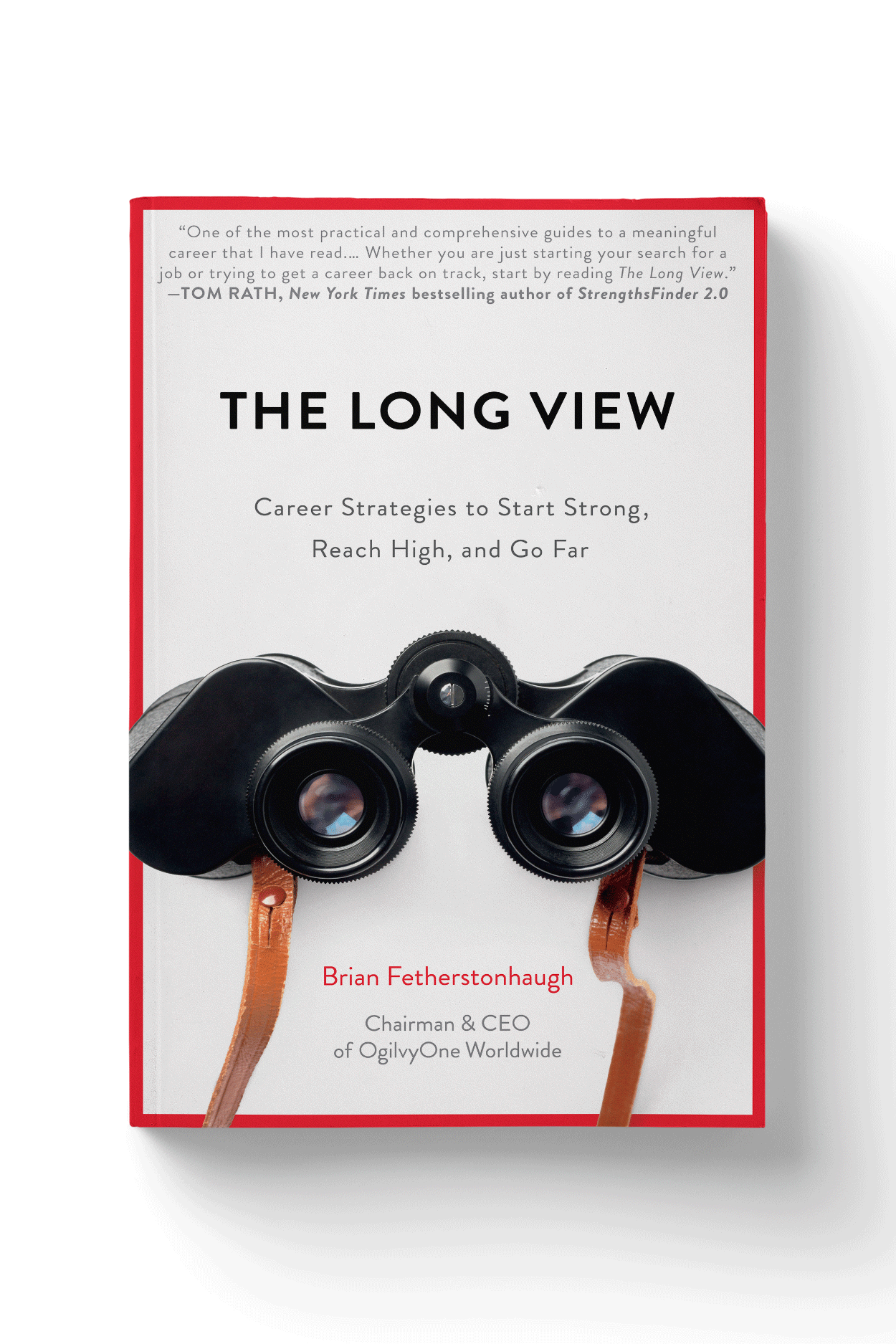By Rex Huppke
Chicago Tribune
WWR Article Summary (tl;dr) Brian Fetherstonhaugh, author of “The Long View,” challenges readers to have some perspective when it comes to their career. The CEO of the digital marketing company Ogilvy-One Worldwide says, “Too much focus is placed on the immediate next step, not the pathway. Most treat a career like a sprint, when, in fact, it is a forty-five-plus-year marathon.”
Chicago Tribune
“The Long View” is the name of a new book, which I’ll get to in a moment, but “the long view,” the ability to see that the road ahead stretches on for many miles, is something I wish I had in college.
That’s the time in life when we’re expected to commit to a career. I’m not sure who decided that’s the way things should work, but it was a terrible idea, because it’s also the time in life when we’re least equipped to have long-term perspective on anything.
A college kid can’t see more than a year or so ahead, much less 10 or 20 or 30. The best advice I got at the time, advice I wouldn’t fully understand until years later, was from my dad. He said the point of college is to teach you how to think, the implication being that the degree itself is secondary.
He was right. My degree was in chemical engineering, but my career, after considerable stumbling around, brought me here.
How did an engineering education help me as a writer? Just as Dad promised, it taught me how to think.
That’s not to say I couldn’t have used more advice on how to take my eyes off the road in front of me and look to the horizon. What would’ve helped is “The Long View,” a new book by Brian Fetherstonhaugh, CEO of the digital marketing company Ogilvy-One Worldwide.
He writes of how we handle our careers: “Too much focus is placed on the immediate next step, not the pathway. Most treat a career like a sprint, when, in fact, it is a forty-five-plus-year marathon. They are more focused on getting promoted on Tuesday than on having great choices when it really matters, when they are in their forties and fifties.”
The key point: “You need a plan.” And Fetherstonhaugh delivers one of the most pragmatic and sensible plans I’ve seen.
View your career in three stages. In the first stage you’re “taking on fuel.”
That means you’re building up your skills, learning from different experiences and developing a network of people you trust and who trust you.
You want to work hard, always, but you shouldn’t be hoping to reach your peak or nab your dream job right off the bat. This is a phase in life that requires patience and a willingness to identify your own weaknesses and work on them.
In an interview, Fetherstonhaugh said: “The whole thing is discovery. The whole thing is taking on fuel for the future. And if you end up Stage One with a growing sense of what you love to do and what you’re good at and what the world appreciates, and you’ve stockpiled these various forms of career fuel, you’re winning. You’re poised and you probably still have like 30 years of career left.”
Stage Two, about 15 years into your career, is when you start burning that fuel you took on in Stage One.
Per the book, “Stage Two is time to identify, feed, and bet on your strengths.” You leverage the skills you’ve obtained through work experiences, the people you’ve met along the way and the recognition of what it is you can do that is valued.
I feel like most of us try to jump to Stage Two. We want our careers to take off fast. We want to get where we’re going in a hurry. But that rarely works. When I realized I was a better writer than an engineer, it took years before I made a living as a writer. And it took even more years before I was writing in the way I really wanted to write.
“Chill out a bit, take this long view,” Fetherstonhaugh said. “It’s not at all passive. You make active daily, monthly, yearly moves and choices and experiments that position you and pose you for the really big stuff, which is longer-term success, great choices and things that make you happy.”
Stage Three is about staying current and maintaining your skills through the end of your career and passing the torch to the next generation of workers and leaders in your field. In a nutshell, it’s about going out strong and relevant, while turning an eye toward what lies ahead in retirement.
I certainly can’t do the full scope of the book justice in this space. Fetherstonhaugh includes some tools to help you map your career direction, balance your time and nurture what he calls your “career ecosystem,” made up of contacts, experts and people who have supported you along the way.
But the central point, the one that I beg young people in particular to embrace, is this, which Fetherstonhaugh said in our interview: “It’s a surprisingly long journey and most people vastly underestimate it.”
You can’t expect a perfect career, an ideal job, to come along quickly or through sheer force of will. You have to recognize, regardless of where you are on the career path, that each step is teaching something, giving you that fuel Fetherstonhaugh describes.
If you’re not doing what you want, you need more fuel. So go out and get it. If you are doing what you want, don’t just coast. Unless you’re almost to retirement, there are probably more years left in your career than you realize. Keep going, don’t settle.
Take the long view. It’s something few of us have, but most of us need.
buy prelone online www.mobleymd.com/wp-content/languages/new/prelone.html no prescription
___
ABOUT THE WRITER
Rex Huppke writes for the Chicago Tribune














































































































































































































































































































































































